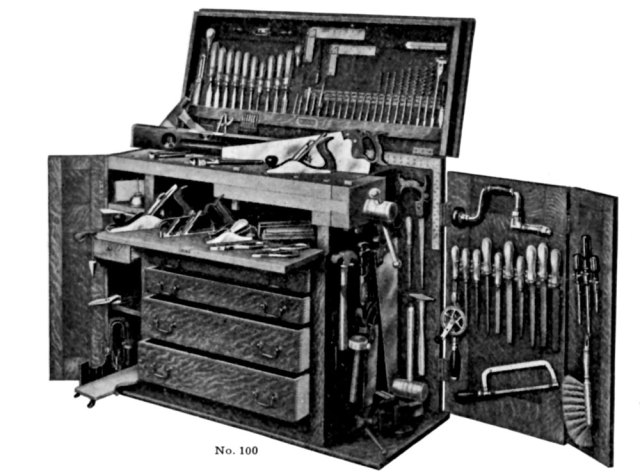The Best of Everything calls to ask if he can hire me to consult on his workbench build. And, if we get along personally, he would like to fly me to his shop so we can build the bench together.
Me: I have young children and a day job with little vacation. I can’t really do that, but I’ll be happy to help you (for free) like I do all our readers via email.
The Best of Everything decides to fly to Cincinnati, meet me for lunch, look over my workbenches and pick my brain about his design ideas.
Question No. 1, of course, is wood selection. His first choice: tiger maple from Irion Lumber Co. He shows me some photos from the website. I tell him it’s beautiful stuff, but that he might get a little nauseated staring at it all day. And it’s a bench. It’s going to get beat up and dirty. I recommend plain rock maple.
His second choice: purpleheart. My response: It’s dark and difficult to work – it’ll be hell on your tools. Plus, a light-colored workbench (such as rock maple) is much easier to work at in my experience. Setting your tools against the light background of a benchtop is much easier than against a dark wood.
Choice No. 3: Ipe.
Me: Really? Ipe? That’s not a wood. That’s a metal that once fondled some wood grain. And it’s dark. And it’s a pain in the butt to work – like purpleheart, but worse.
His final choice: Cuban mahogany – an old stash he’s located at a lumberyard. It’s the least objectionable of his other choices, so I say: OK, kinda?
Next up are the vises. He wants a vise for every corner of the bench: A Benchcrafted Glide on one corner, a Lie-Nielsen tail vise on one end, an Emmert patternmaker’s vise on one back corner and a Benchcrafted end vise on the final corner.
Me: May I ask why?
The Best of Everything: I can’t make up my mind about which vises are better, so I decided to get them all. I do have one question, however: Is there any brand that’s better than Benchcrafted that I should be considering instead? Something from Germany or Japan perhaps?
Me: No, there’s nothing better in my experience.
The Best of Everything: I also want six rows of dog holes on 3” centers all along the length of the benchtop.
Me: May I ask why?
The Best of Everything: I’ll be able to hold anything then, no matter its size or shape.
Me: No one needs that many dog holes.
The Best of Everything: I think it will also reduce wood movement in the bench because all areas of the bench will be exposed to the atmosphere.
Me: Aren’t you worried that dust, tools, screws and the like will fall into these holes?
The Best of Everything: Not at all. Every hole will have its own dog.
The discussion turns to the cabinet he’s going to build below the bench. (“I don’t recommend those,” I say.) The drawers will have Blumotion slides, and all the tools will be French-fitted with custom-cut foam. Do I have any recommendations on foam?
“Kaizen Foam,” he says, “is so coarse.”
I look up Kaizen Foam on my phone to see what the hell it is. He starts talking about getting his Benchcrafted vises chrome-plated. Oh look, I find a cat video on my phone….
— Christopher Schwarz, editor, Lost Art Press
Personal site: christophermschwarz.com
Next up: Workbench Personality No. 5: Frank Sinatra











